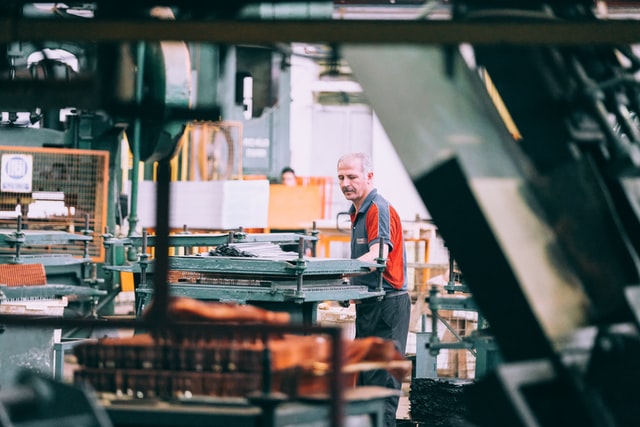The Ultimate Guide to Injection Mold Design and Manufacturing
Injection molds are used for creating plastic parts of various shapes and sizes. In this article, you will learn about the multiple types of molds available, their costs, and the process of making a mold. With these helpful tips, you will be able to make the best choice for your needs. Listed below is the information to help you make a great mold:
Cost of an injection mold
Injection molding is a high-speed manufacturing process that requires little maintenance. It produces near-zero rejected parts, and the mold design and manufacturing cost depend on several factors, including the material used, size, and innovation. Complex parts may require more time to develop a mold. The mold also contains a base, which holds the cavities and inserts them together. The base is necessary to connect the mold to the injection molding machine. Standard mold bases are available, but they can also be custom-designed to fit specific project requirements in most injection mold design & manufacturing.
Injection molds are generally manufactured using CNC machining, though offshore suppliers can manufacture them using your CAD details. The molds can be produced in China and shipped to your location, saving you travel costs. Some companies choose to hire an in-house tooling engineer to oversee the process. In these cases, the travel costs are included in the mold cost. If the parts are simple, you can skip expensive CAD/CAM and EDM.
Types of molds
Injection molding is a standard manufacturing process used to create plastic parts with various features. Injection molding machines can be of several types, including plastic injection, metal injection, and vertical injection. In addition, injectors come in different shapes and sizes, and the suitable mold for your job will depend on these factors. Read on to learn about the different types of injection molds and how they work. We’ll also discuss why they’re essential.
Injection molds are classified by their runner systems, plate amount, and part capacity. Injection molds come in different shapes, with each mold having distinct advantages. For example, a multi-plate mold has multiple cavities. Choosing the suitable mold depends on how many parts you need to create. To find out which type of mold is best for your job, consider the materials you plan to use. For example, PEI is ideal for manufacturing high-temperature components. In addition, PEI has excellent dimensional stability and chemical resistance. Injection molding is a superb manufacturing method, and it’s often used for producing large, high-volume parts. Though it can be expensive, this process can make remarkably high-quality parts with near-identical features.
Cost of making a mold
Among the most critical factors that affect the cost of making an injection mold is the choice of material. The type of plastic used in the mold and the quality of the material will determine the total cost of the mold. For example, if the part you are making will require high pressure, you will need a hardened steel mold. This mold will be more expensive, but the overall cost of the molding will be low for years.
A simple 3D printed mold can be made for less than $100, but a complex mold for high-volume production can cost $100,000. However, this mold’s variable cost is greatly reduced by using inexpensive thermoplastics and short cycle times. In addition, economies of scale and automation reduce the need for human labor, which reduces the overall cost per part. Therefore, it is easy to see that a higher-volume mold will be more affordable for the manufacturer.
Process of making a mold
An injection mold consists of creating a design that enables the mold to produce several identical copies of a product. Injection molds have cavity areas that can produce several documents of a single part. This process is sometimes referred to as cavitation. A single impression mold typically contains one impression, while a multiple impression mold contains several images. Large production-volume molds may have over 128 cavities.
The first step in the process is making a metal mold base. This structure is made of a softer steel than the cavity and core. A softer steel is used because it costs less to purchase. This part of the mold is also often referred to as the “base” of the mold. The mold base will hold the mold’s details together as the product is injected. The mold base is also essential for absorbing the pressure created during injection molding.
Cost of machining a mold
If you’re considering purchasing a plastic injection mold, you’ll want to check the price quotes given by several companies. The price quoted by one mold maker may be different from the cost of another, and the mold itself may cost more than the initial quote. To avoid any surprises, read on to learn how to estimate the price of a mold. The expenses of machining a mold depend on several factors, including the type of plastic and the amount of production run you need.
The number of cavities and side-action directions, in part, can significantly impact the cost. The number of side cores used can reduce the overall cost, limiting the number of cavities in a mold. For instance, a mold with three side-action directions can only contain two cavities. Therefore, more cavities would reduce the overall mold cost. To save money, consider the size of the cavity.
Cost of 3D printing a mold
While the cost of 3D printing an injection mold is similar to that of the traditional manufacturing process, some advantages make this technology an attractive option. Unlike traditional molding, which involves expensive machining and finishing, 3D printing allows you to design your part precisely the way you want it. Furthermore, 3D printing can produce complex medical components; it is an excellent option for prototypes or small-run runs. Read on to learn about the pros and cons of 3D printing your mold.
Injection molding costs are higher than 3D printing, but they can still be affordable for small-scale production. While the price is high initially, it rapidly drops once the production volume is over 60 pieces. On the other hand, injection molding is a cost-effective solution for small batches, but 3D printing may not be practical for large production runs. The reason is simple: 3D printing has an advantage over injection molding. The initial costs of 3D printing are significantly lower than injection molding. However, as production volume increases, the risk of misprints goes up.

